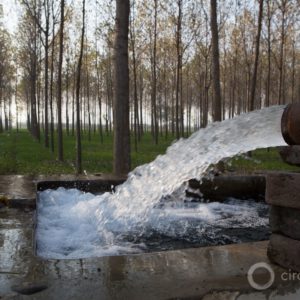The Stream, August 4: Scientists Link Groundwater Depletion To Disappearing Great Plains Streams
The Global Rundown
Declining groundwater levels in the U.S. Great Plains are contributing to the loss of streams and fish communities, researchers found. Oil pollution in the streams and rivers of Peru’s Amazon could cost $1 billion to clean. A new atlas details drought conditions in the Caribbean over the past 60 years. In an effort to boost food security, the Food and Agriculture Organization is launching a tool to help Central American farmers and governments prepare for droughts. Floods in Thailand have killed nearly two dozen people and could affect rice crops. Egypt announced plans to raise water and sewage rates this month as it reduces government subsidies.
“Water is the source of our life. There’s no fish anymore in the [River] Corrientes. [People who buy this oil] should know where it comes from.” –Daniel Saboya, president of the FEPIAURC indigenous federation in Peru, commenting on oil operations that have contaminated rivers and streams in the country’s northern Amazon region to the detriment of indigenous communities. It could cost $1 billion to clean up the area. (Guardian)
By The Numbers
23 people Number killed by floods in rice-growing regions of northeastern Thailand amid stronger-than-normal annual rains. The floods have caused an estimated $300 million in damages. Reuters
50 percent Increase in drinking water and sewage fees approved by Egypt as it attempts to cut subsidies and reduce its budget deficit. The new rates will take effect this month. Associated Press
Science, Studies, And Reports
Groundwater depletion has contributed to the loss of more than 560 kilometers of streams in the Great Plains of the United States, and it could cause nearly 300 kilometers more to be lost by 2060, according to researchers at Kansas State University. The disappearance of streams is changing fish communities, which could in turn disrupt the larger food web, they found. Science Daily
In context: With locals at the helm, Kansas charts new course for groundwater management.
A new drought atlas for the Caribbean provides a high-resolution look at drought conditions in the region over the past six decades. Cornell University researchers, who developed the atlas, say it also shows how climate change is contributing to higher temperatures that can increase the chance of drought. Science Daily
On The Radar
A new mapping tool will help predict areas in Central America where crops may be negatively affected by drought, according to the United Nations Food and Agriculture Organization. The tool is meant to help farmers prepare for water shortages and enable governments to respond more quickly. Reuters
A news correspondent for Circle of Blue based out of Hawaii. She writes The Stream, Circle of Blue’s daily digest of international water news trends. Her interests include food security, ecology and the Great Lakes.
Contact Codi Kozacek





